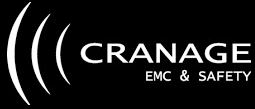 Add My Company
Add My Company
Sign In
Requirements for Machinery
29-10-2015

What is EMC?
Electromagnetic compatibility is a term used to describe electrical and electronic products which are ‘resistant to electromagnetic disturbance’ and ‘incapable of producing harmful electromagnetic disturbances’. This subject is not to be confused with human body exposure due to EMF (Electromagnetic Fields) and so the word ‘harmful’ is used to describe the adverse way in which electromagnetic emissions can affect the operation of other electronic equipment if protection is not afforded.
Does it apply to me?
Electrical machines have all got one thing in common, the utilisation of electrical energy, and the electrical wiring which makes this possible conducts and radiates electromagnetic energy much like the workings of a radio antenna which is capable of receiving and transmitting electromagnetic waves according to what it is connected to and the electrical charges contained within it. Therefore, unless a machine is a self-contained stand-alone product it doesn’t necessarily follow that it is incapable of producing harmful disturbances when installed on the users’ premises. To accommodate this possibility, conformity assessment procedures for EMC have been developed for ‘apparatus’ and ‘fixed installations’. It also enables the viability of Certificates of Incorporation in lieu of a CE Mark.
There are procedural exemptions for demonstrating conformity for apparatus intended to be integrated within large industrial plant schemes, for example, but such ‘Incorporation’ in the context of the EMC Directive should not compromise the conformity of a fixed installation. Under these conditions, it is necessary to identify the EMC characteristics of the fixed installation using testing methodologies adapted for this purpose.
What happens if an EMC problem is found and whose expense would it be to correct?
It is not possible to determine the degree of electromagnetic emissions a machine can either produce or withstand without performing the appropriate tests for EMC. Suffice to say, the recast EMC Directive 2013/30/EC now requires the provision of a test report as a vital part of the Technical Documentation for conformity assessment.
Effective from 20th April 2016 is the new requirement to maintain a Declaration of Conformity for EMC. This would involve checking standards and procedures for EMC throughout the sales life of a machine. It also means that it may be necessary to review the status of machinery designs that were declared compliant with previous EMC Directives such as 2004/108 or 89/336/EEC. 
For manufacturers and importers, particular attention should be paid to the design and construction of safety related parts of the control systems of machines to ensure acceptable functional performance and because electromagnetic radiation has the capability to over-ride safety control systems, EMC is a critical part of the Machinery Directive.
What should I do about EMC?
The EMC Directive doesn’t tell you which testing standards to use or how to do the testing, but it provides useful information on what is required to support a Declaration of Conformity.
There are numerous standards published that will assist you to test for EMC and some can be used for machinery; they detail the technical requirements of test equipment, limits for emissions and acceptance criteria for immunity, and they also detail how to carry out the tests, but in reality, experience is needed to apply them and make sense of the results.
Email info@cranage.co.uk or telephone Keith Richens 01630 658568 for more information.
For more information on Requirements for Machinery talk to Cranage EMC & Safety
Enquire Now
List your company on FindTheNeedle.

